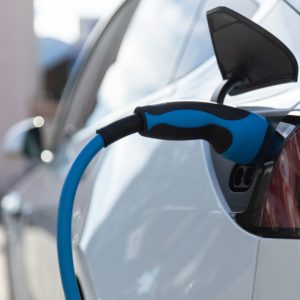 On April 20, CalChoice associate member Lancaster Energy joined the U.S. Department of Energy and twenty other parties in signing a memorandum of understanding (MOU) to integrate bidirectional electrical vehicle charging into California’s energy infrastructure. The project is known as “vehicle-to-everything” or “V2X.”
On April 20, CalChoice associate member Lancaster Energy joined the U.S. Department of Energy and twenty other parties in signing a memorandum of understanding (MOU) to integrate bidirectional electrical vehicle charging into California’s energy infrastructure. The project is known as “vehicle-to-everything” or “V2X.”
“Bidirectional charging technology will allow EVs to charge up while simultaneously pushing power back to our electricity grid,” said Lancaster Mayor R. Rex Parris. “Lancaster Energy is proud to be part of this initiative, as it will increase energy resilience and improve overall grid health.”
The MOU allows involved parties to explore the feasibility of bidirectional charging as well as collaborate on implementation strategies. By bringing together private and public experts, the MOU will leverage the knowledge of key stakeholders to improve energy infrastructure and efficiency state-wide.
“Accelerating the deployment of vehicle-to-everything technology is an important step for the future of clean transportation,” continued Parris. “Additionally, this initiative helps contribute to the country’s energy security, resilience, economic vitality, and quality of life all while supporting the electrical grid.”
Lancaster Energy will be working closely with the Department of Energy, the California Energy Commission, the California Public Utilities Commission, along with a range of other cities and utility providers to bring V2X to fruition. Together, these partnered organizations will conduct research and deliver development support to integrate widespread EV infrastructure.
“Thank you to Lancaster Energy for demonstrating your commitment to California’s energy security by participating in this MOU,” said CalChoice Executive Director Jason Caudle. “Vehicle to grid integration is an innovative and effective strategy for keeping up with high electricity demand, and it also paves the way for a more sustainable future.”

